Critical Ops 2022
Books
| Book | Kind | Edition | Version | Last update |
 Critical Operations 2022 - Tac Ops & Mission Card Pack Critical Operations 2022 - Tac Ops & Mission Card Pack | ||||
 Critical Operations 2022 - Tac Ops & Mission Card Pack Critical Operations 2022 - Tac Ops & Mission Card Pack | Rulebook | 2 | December 2022 | |
 Critical Operations 2022: Close Quarters Critical Operations 2022: Close Quarters | ||||
 Critical Operations 2022: Close Quarters Critical Operations 2022: Close Quarters | Expansion | 2 | December 2022 | |
 The Balance Dataslate The Balance Dataslate | ||||
 The Balance Dataslate The Balance Dataslate | Rulebook | 2 | Q2 2024 | June 2024 |
 Approved Ops 2023: Hazardous Areas Approved Ops 2023: Hazardous Areas | ||||
 Approved Ops 2023: Hazardous Areas Approved Ops 2023: Hazardous Areas | Expansion | 2 | January 2024 | |
Matched Play Game Sequence
1. Determine Mission and Map
Determine the mission and map. Here you will find a variety of methods to do this:The Attacker chooses two mission cards to put forward. The Defender selects one of them to use.
The Defender chooses three map cards to put forward. The Attacker selects one of them to be discarded. The Defender selects one of the remaining cards to use.
The Defender selects their drop zone after setting up the objective markers and killzone as normal.
They then select one of the map types (i.e. 1-3, 4-6 or 7-9) that was not used in the previous battle, and the loser selects one of the map cards from that type.
- Mission
- Map
- Attacker and Defender (instead of rolling off)
- First initiative (instead of selections in the Scouting step)
For example, in the map category, if one player bids 2 tokens and another bids 4, the latter would decide which map card to use. Both players would discard those tokens, then repeat this process for determining who decides Attacker and Defender.
2. Set Up Objective Markers and Killzone
Set up objective markers in the locations specified by the map card.Determine the killzone and set up its terrain features, ensuring the traits of each terrain feature and its parts are specified.
3. Determine Attacker and Defender
The players roll off and the winner decides Attacker and Defender. The Defender selects one of the drop zones as theirs; the Attacker has the other.4. Select a Kill Team
Each player selects operatives from their matched roster to fulfil their faction’s kill team requirements, then reveals their selections to their opponent. Each player adds 3CP to their pool.5. Select Tac Ops
Each player secretly selects three Tac Ops. They can select up to one of their faction Tac Ops; all of their remaining Tac Ops must be selected from one of their archetypes. Players only reveal each Tac Op when it specifies, and they do not have to reveal which archetype they are using until they reveal one of its Tac Ops.Here you will find alternative methods you can use to determine Tac Ops:
To bid, each player will secretly put any of their tokens into their hand as their bid (or zero if they wish), then reveal their bid simultaneously. The player that bids the most wins. If it’s a draw, that bid is cancelled and the players bid again, unless they both bid zero, in which case the players roll off to determine who wins. Once the bid is resolved, both players discard their bid tokens.
6. Select Equipment
Each player selects up to 10 points worth of their faction’s equipment for the battle, assigns it to their operatives as specified, then reveals it to their opponent.7. Set Up Barricades
Starting with the Defender, players alternate setting up barricades one at a time until they’ve set up two each. Each time a player sets up a barricade, it must be within of their drop zone, more than from all other barricades and not on a terrain feature (unless it has the Insignificant trait).8. Set Up Operatives
Each player separates their operatives as numerically evenly as possible into three groups. If a player wants to use any rules (if they have any) to set up operatives in a location alternative to their drop zone, they must declare them now, including the relevant operatives for this.Starting with the Defender, each player alternates setting up their operatives one group at a time. When a player sets up an operative, it must be wholly within their drop zone and must be given an Engage or Conceal order.
9. Scouting
Each player secretly selects one of the pre-game scouting options, either by using the scouting cards provided or by placing a number of dice in their hand to match their selection. Once both players have selected, they reveal their selection simultaneously. They then resolve their selection starting with the Attacker. The scouting options are below, and their effects are specified on the scouting cards.
|
10. Play the Battle
The first Turning Point of the battle begins. In the first Initiative phase, initiative is determined by the players’ choices in the Scouting step: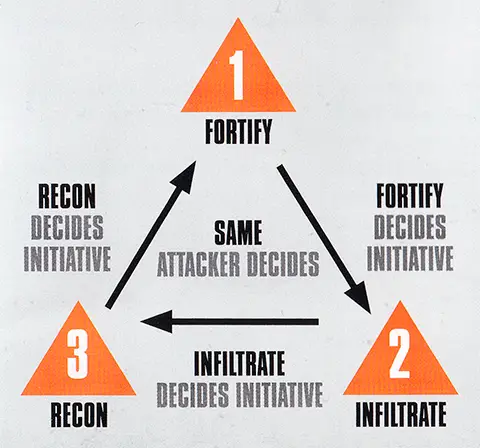
11. End the Battle
The battle ends after four Turning Points have been completed. If one player has no operatives remaining in the killzone, the other player continues to play out each remaining Turning Point until the battle ends.At the end of the battle, the player with the most victory points is the winner of the game. If players are tied, the game is a draw.
- Each player can score a maximum of 4 victory points from the mission objective each Turning Point, however each player cannot score more than 16 victory points in total from the mission objective during the battle.
- Each player can score a maximum of 2 victory points from each Tac Op. Therefore a player’s Tac Ops are worth 6 victory points in total.
- If every operative on a player’s matched roster is painted to a Battle Ready standard, that player scores 2 victory points.
- In total, each player can score a maximum of 24 victory points from the game.
Crit Ops 2022: Close Quarters
The Critical Operations 2022 Tac Ops and Mission card pack offers a new and updated way to play matched play games in Kill Team. This document explains how you can use that pack in a battle that uses the Close Quarters rules.
For the pack’s Tac Ops, two new Tac Ops have been introduced to replace two others:
- Seize Access Point replaces Seize Ground.
- Secure Unexplored Rooms replaces Secure Vantage.
Finally, your barricades must be set up within your territory, and more than from access points and all other barricades.
Approved Ops 2023: Hazardous Areas
This document explains how you can use the Approved Ops Tac Ops and Mission card pack in a battle that uses the Hazardous Areas rules.
A Bheta-Decima objective marker is an objective marker as normal, but it’s also a terrain feature with the Light and Traversable traits. Parts of it no more than tall (e.g. its base and hatch, but not its aerial) also have the Vantage Point trait. Unlike normal Traversable terrain, this means operatives can finish a move on top of such parts, so long as the operative can be physically placed there.
Operatives cross the gap between different gantries (i.e. ones that aren’t connected) by jumping (see the Kill Team Core Book). Yellow lines on the mission map indicate the terrain features where operatives can do this to and from. When setting up the killzone, ensure the related gantries are an appropriate distance from one another so operatives can jump.
- Plant Transponder (Recon): When determining if an operative is more than from terrain features to perform this action, ignore gantries underneath it, and the ferratonic furnace if it’s on that terrain feature’s roof.
- Secure Vantage (Recon): At least half of the Vantage Point you control must be within your opponent’s territory.
- Secure Centre Line (Security): Operatives can be on a Vantage Point.
- Central Control (Security): Replaced with Ferratonic Furnace Control. You can use the Central Control card as a proxy if you wish (i.e. so it matches the other Tac Ops cards to keep your selections secret), but use the rules for Ferratonic Furnace Control instead.
Mission Generator
Press ‘Select’ button (
 ) to add Tac Op to your Selected Tac Ops list. ‘Remove’ button (
) to add Tac Op to your Selected Tac Ops list. ‘Remove’ button (  ) used to remove Tac Op from the list. Note that generator limits only the maximum number of Tac Ops allowed (three) - Select Tac Ops rule omitted so you are free to pick any Tac Ops.
) used to remove Tac Op from the list. Note that generator limits only the maximum number of Tac Ops allowed (three) - Select Tac Ops rule omitted so you are free to pick any Tac Ops.If you accidentally close the browser or refresh the page your card selection will be safe. It is saved in cookies of the browser on the current device.
|
|
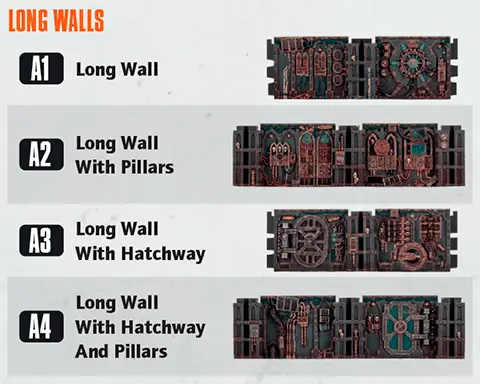
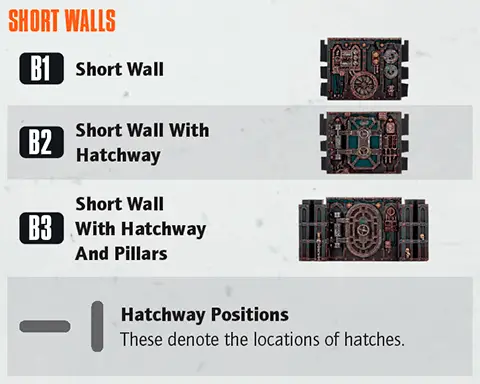
Selected Tac Ops
Archetype Tac Ops
Faction Tac Ops
Card Decks
Close Quarters Mission Maps
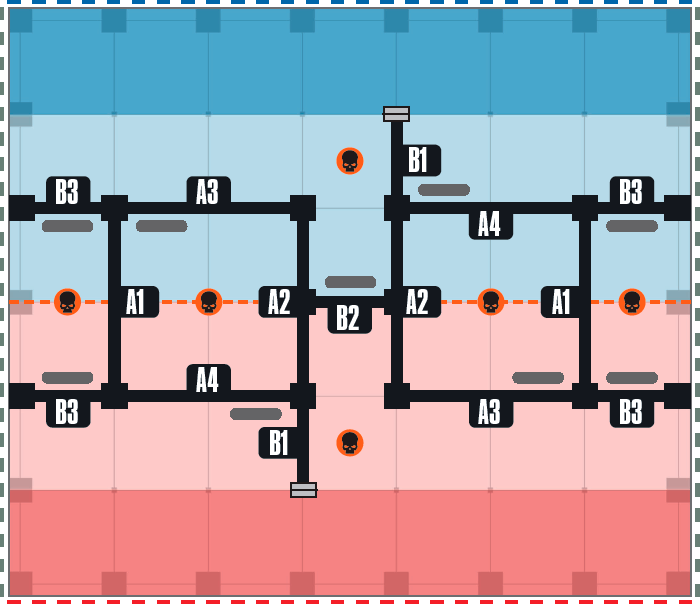
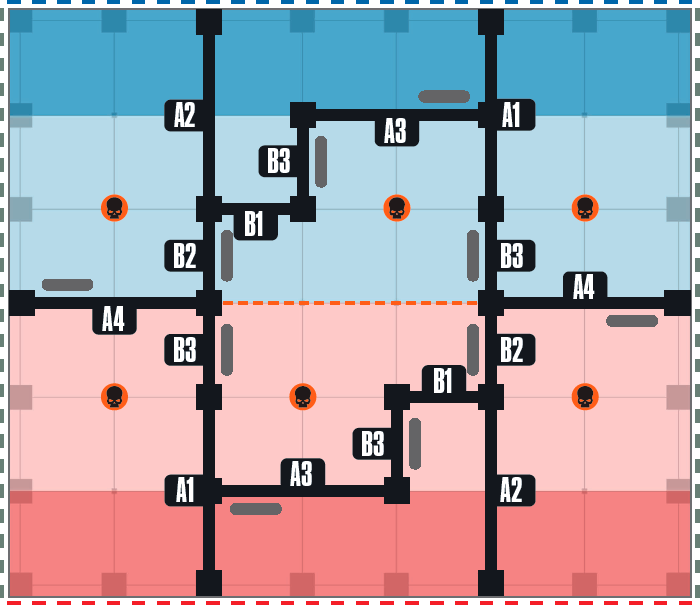
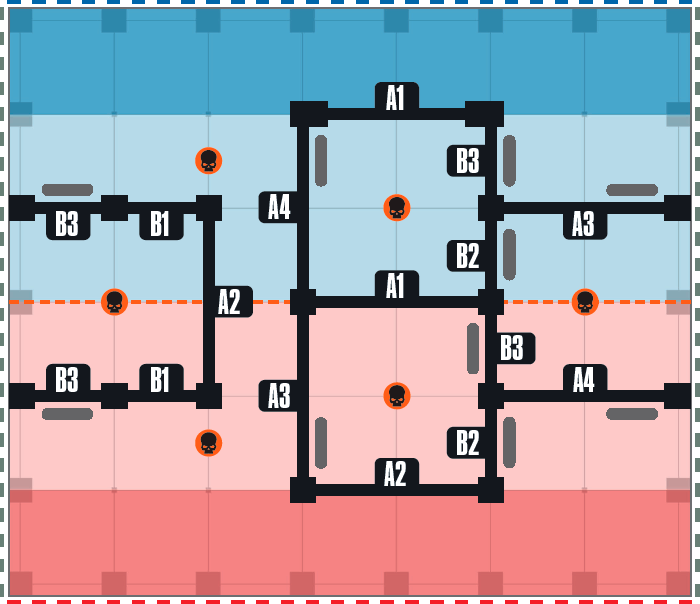

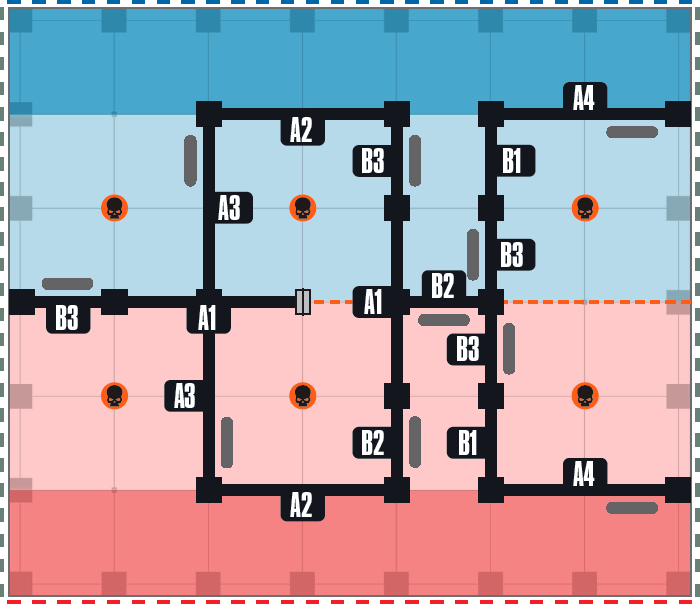
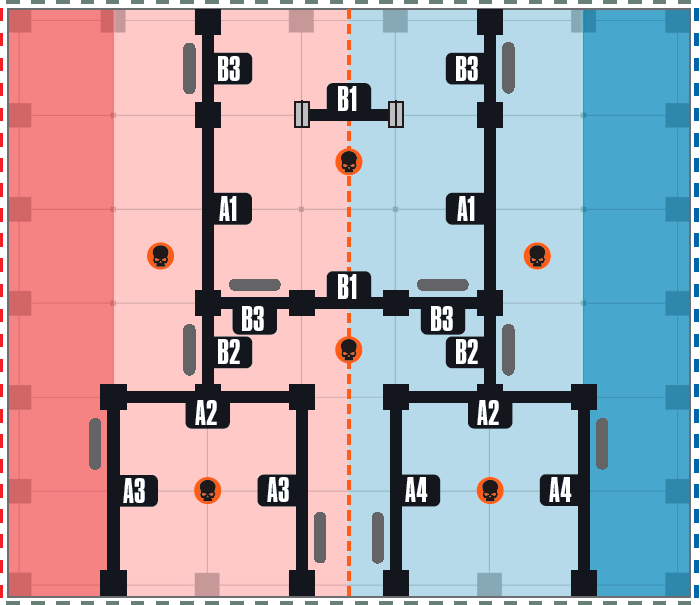
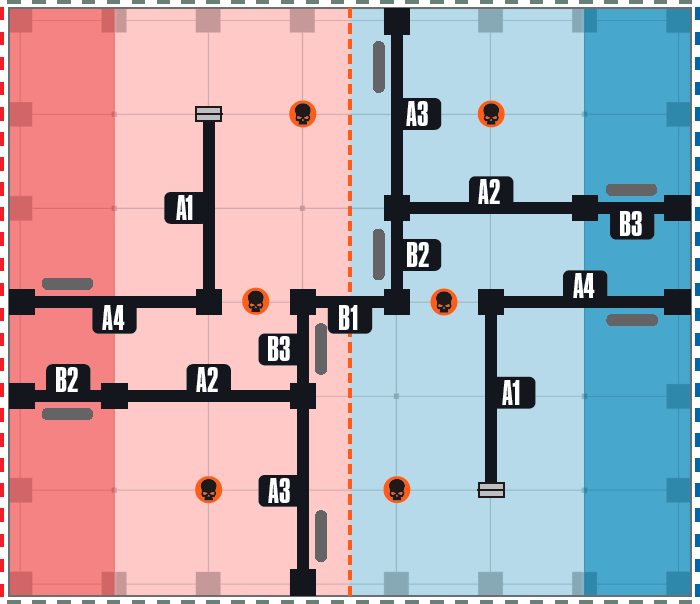
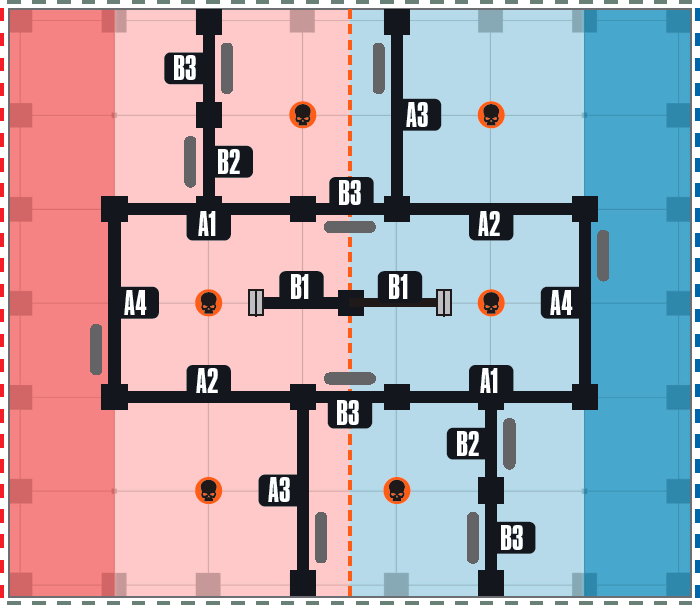

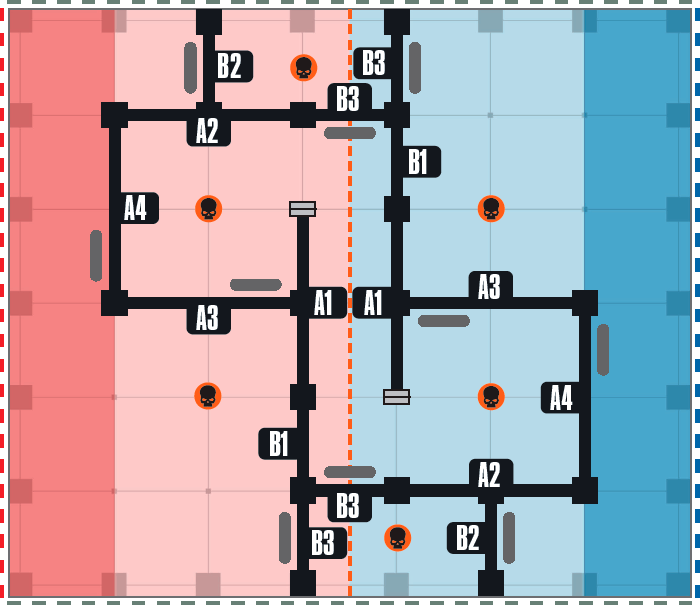
Mission Maps
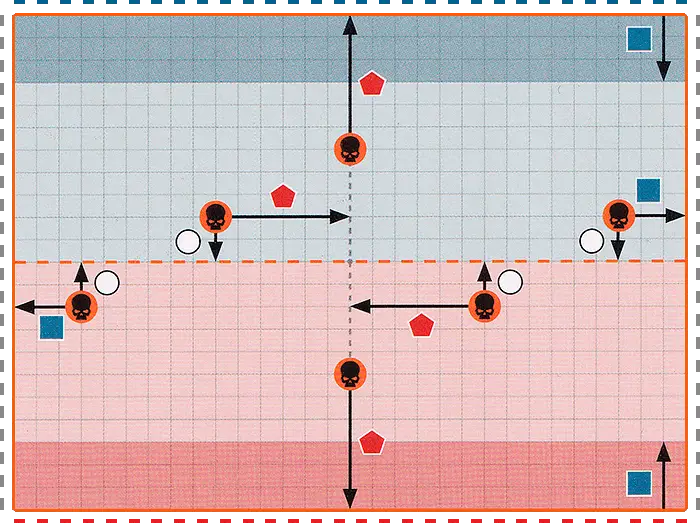
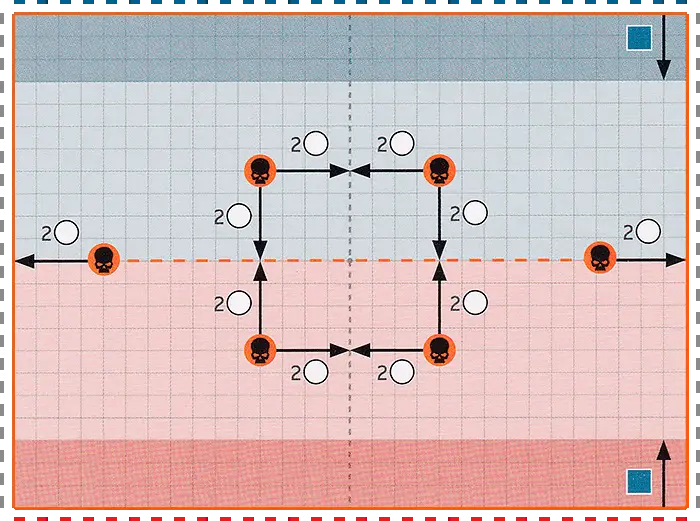
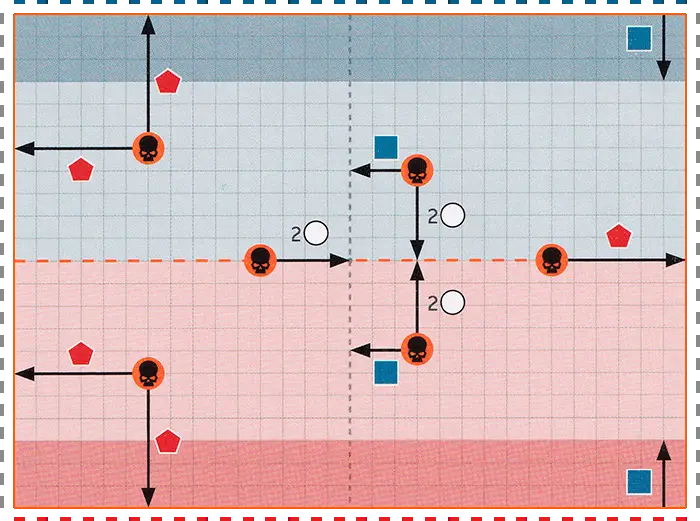
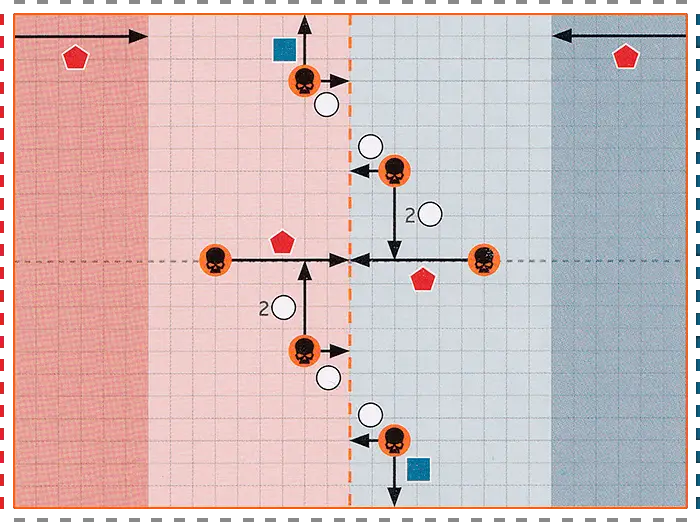
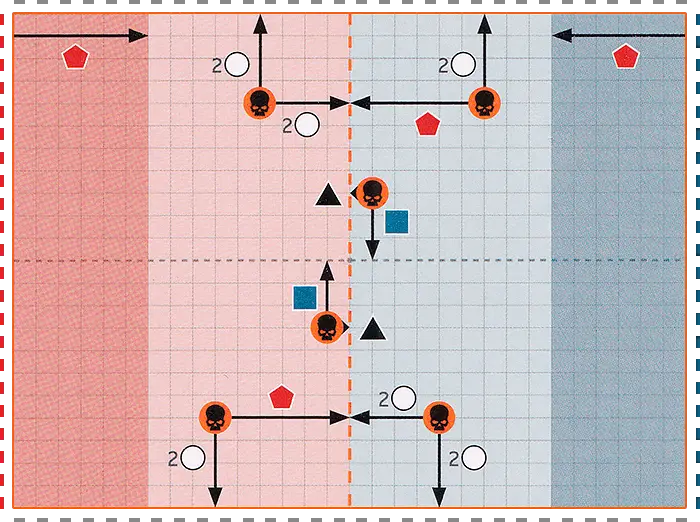
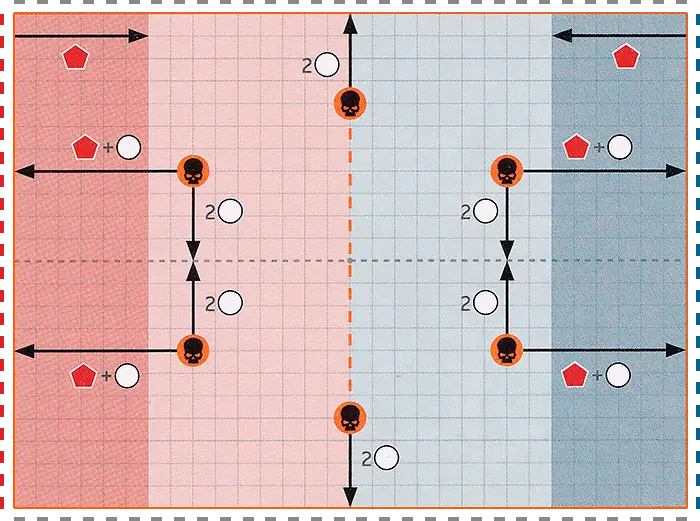
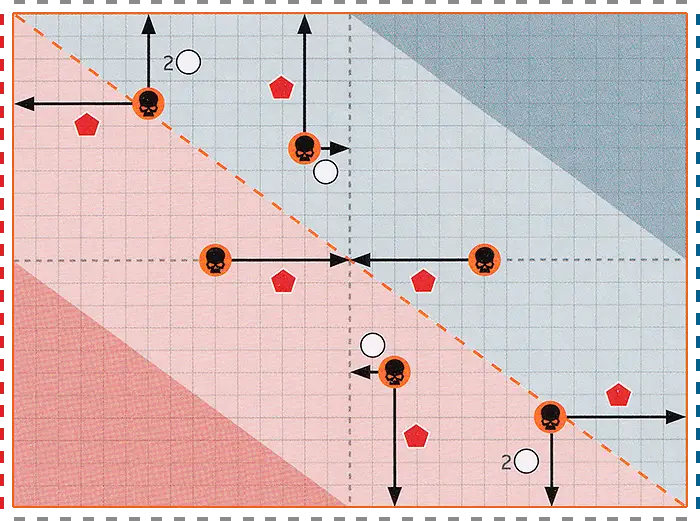
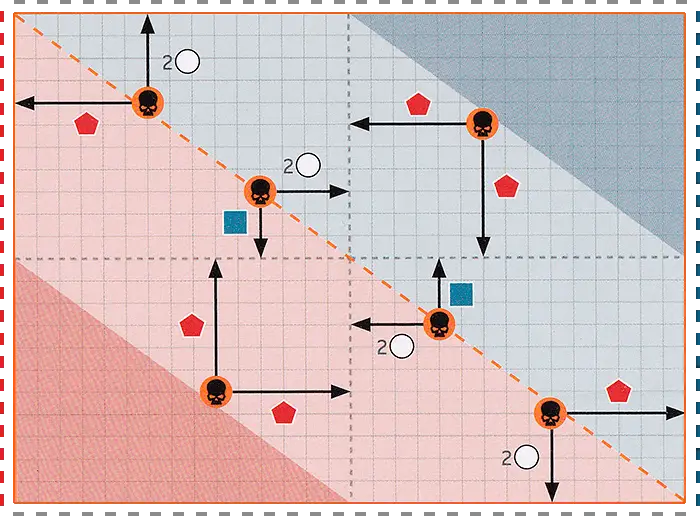
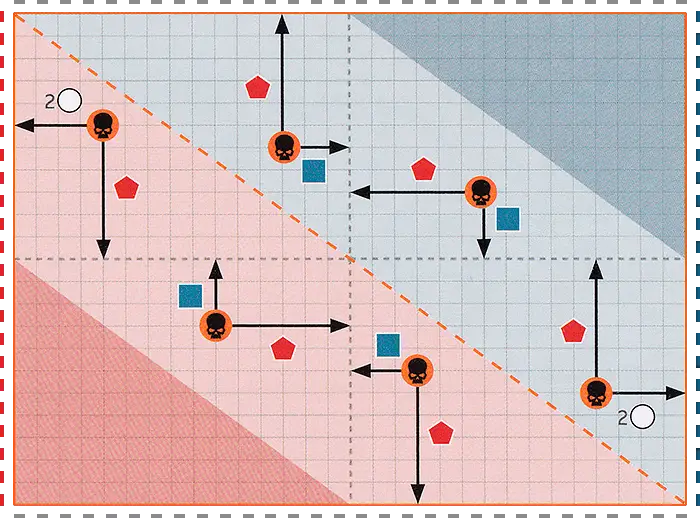
Mission Rules
LOOT1AP
SECURE1AP
- Universal actions can be performed by all operatives. They are detailed below.
- Unique actions are actions detailed on an operative’s datacard that only they can perform, such as the Dakka Dash action found on the example datacard.
- Mission actions are specific to the mission you are playing, and will be detailed by that mission’s briefing. Missions can be found here (Open Play mission) and here (Spec Ops Narrative missions).
- Free actions can only be performed when another rule specifies. Each time an operative would perform a free action, the following rules apply.
- The operative can perform the action, so long as the requirements of the action are met.
- The player does not subtract any additional AP to perform the action.
- The operative would still count as performing the action for all rules purposes. For example, if it performed it during its activation, it would not be able to perform the action again during that activation.
For example, when a KOMMANDO DAKKA BOY performs a Dakka Dash action (see unique actions, above), it can perform a free Dash and free Shoot action without subtracting any additional AP (other than the AP spent on the Dakka Dash action). However, it is subject to those actions’ requirements, therefore it cannot perform the free Dash action if it is within Engagement Range of enemy operatives, and cannot perform the free Shoot action if it is within Engagement Range of enemy operatives or has a Conceal order. In addition, for each of the free actions it performs, it cannot perform them again during its activation.
- The intended target is more than from the active operative.
- The intended target is within of a point at which a Cover line crosses another operative’s base (unless that other operative is not itself in the active operative’s LoS), or a terrain feature that provides Cover (see Terrain Traits).
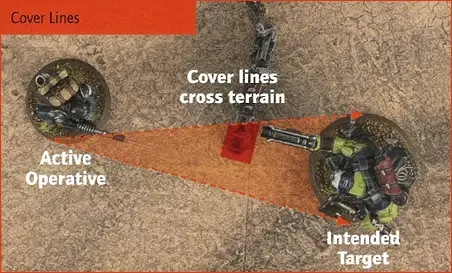
In the Strategy phase of a subsequent Turning Point, when it is your turn to use a Strategic Ploy or pass, you can select one different Imperative below to become active for your kill team instead. That Imperative is active until the end of the battle (you cannot change your active Imperative again).
Each Imperative has an Optimisation and a Deprecation effect. Both are in effect while that Imperative is active for your kill team.
- Doctrina Imperatives can be selected each Turning Point (instead of only twice per battle).
- Ignore each Imperative’s Deprecation effect during the first Turning Point that it is active for your kill team during the battle.
Protector Imperative Optimisation: Each time a friendly HUNTER CLADE operative makes a shooting attack, in the Roll Attack Dice step of that shooting attack, you can re-roll one of your attack dice. |
Conqueror Imperative Optimisation: Each time a friendly HUNTER CLADE operative fights in combat, in the Roll Attack Dice step of that combat, you can re-roll one of your attack dice. |
Bulwark Imperative Optimisation: Each time a shooting attack is made against a friendly HUNTER CLADE operative, in the Roll Defence Dice step of that shooting attack, you can re-roll one of your defence dice. |
Aggressor Imperative Optimisation: Add to the Movement characteristic of friendly HUNTER CLADE operatives. |
Equalised Imperative Optimisation: No effect. |
- If your Reputation tally is 12 or more, you score 1VP.
- At the end of the battle, if your Reputation tally is greater than that of your opponent’s, you score 1VP.
Methodical, professional and well-drilled, Imperial Navy Breachers work as a unit to breach and clear the corridors and chambers of enemy voidcraft, space hulks, orbital stations and more.
Once per Turning Point, when a friendly IMPERIAL NAVY BREACHER operative is activated, you can use this ability. If you do so:- Select one other ready friendly IMPERIAL NAVY BREACHER operative Visible to and within of that operative that is eligible to be activated.
- Until the end of the Turning Point, those operatives are treated as having a Group Activation characteristic of 2.
- When the first operative’s activation ends, you must select the second operative (even if it is not of the same type) to fulfil the Group Activation requirements.
SABOTEURS1AP
Incalculable damage can be done to the enemy’s strategic and logistical infrastructure with the application of a single, well-placed explosive by a Vanguard operative.
The BLOODED keyword is used in the following Blooded datacards:
Having cast aside their oaths of loyalty to the Golden Throne, these Traitor Guardsmen now seek to catch the eye of a Dark God. To this end, they make the battlefield into their sacrificial altar, risking acts of insane bravado to spill enemy blood, and perhaps earn fleeting rewards of unholy power.
Keep a pool of Blooded tokens. Add a Blooded token to your pool as follows:- At the start of each Initiative phase.
- The first time an enemy operative is incapacitated in each Turning Point.
- The first time a friendly operative is incapacitated within of an enemy operative in each Turning Point.
In each Strategy phase, after assigning your Blooded tokens (if any), if four or more friendly operatives in the killzone have Blooded tokens, you can select one of them to be under the gaze of the gods until the end of the Turning Point.
Each time a friendly BLOODED operative that has a Blooded token fights in combat or makes a shooting attack, in the Roll Attack Dice step of that combat or shooting attack, before rolling your attack dice, you can retain one as a successful normal hit without rolling it. If that friendly BLOODED operative is under the gaze of the gods, you can retain one as a successful critical hit instead.
The NIGHTMARE HULK keyword is used in the following Gellerpox Infected datacards:
The DIRE AVENGER keyword is used in the following Craftworld datacards:
The HOWLING BANSHEE keyword is used in the following Blades Of Khaine datacards:
The STRIKING SCORPION keyword is used in the following Blades Of Khaine datacards:
Aspect Warriors are sublimely skilled fighters dedicated to the pursuit of mastering a particular art of war. Each is trained in myriad killing techniques, movements and progressions. When practised in combat, these forms are as breathtaking to behold as they are lethal to the Aspect Warriors’ foes.
Aspect Techniques are unique abilities you will find over the following pages that are available to BLADES OF KHAINE operatives with the relevant keyword.- You cannot use more than one technique per activation.
- You cannot use each technique more than once per Turning Point.
- If every friendly BLADES OF KHAINE operative selected for deployment has the same Aspect keyword (e.g. STRIKING SCORPION), you cannot use each technique more than twice per Turning Point instead.
- The intended target is more than from the active operative.
- The intended target is within of a point at which a Cover line crosses another operative’s base (unless that other operative is not itself in the active operative’s LoS), or a terrain feature that provides Cover (see Terrain Traits).

- The first time you strike with a critical hit, select one of your opponent’s normal hits from that combat to be discarded
- The second time you strike with a critical hit, subtract 1 from the target’s APL.

Merciless killers without exception, Striking Scorpions revel in the patient hunt and the sudden kill. They are sinister warriors, expert in becoming one with the shadows to creep up on the foe until they are close enough to drive the whirring teeth of their chainswords into flesh.
Carefully concealed in cover or in shadows, Striking Scorpions stalk their completely oblivious prey The Aspect Warriors manoeuvre in complete silence around their targets to select the optimum position to launch a killing strike.
Masters of the hit and run attack, Striking Scorpions withdraw from combat as suddenly as they strike, slipping back into the shadows and disappearing like murderous ghosts.
A Striking Scorpion's shuriken pistol has a viewfinder psychically linked to its bearer. With it, the Aspect Warrior can see through multiple spectra as well as swiftly identify friend from foe.
When Striking Scorpions launch their assault, they attack with relentless ferocity, landing blow after blow to grant the enemy no moment of reprieve in which to collect themselves.
Years of strict practise see Striking Scorpions able to blend uncannily with the shadows, striking out at unsuspecting foes with terrifying accuracy
The DIRE AVENGER keyword is used in the following Blades Of Khaine datacards:
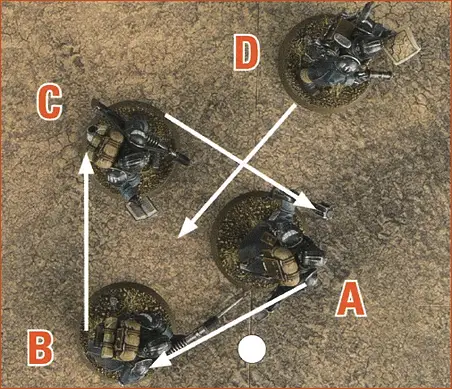
- An operative performs a Shoot action, selects a ranged weapon with the Torrent special rule, and selects operative A as the target.
- After making the shooting attack against operative A, it makes a shooting attack against operative B and C, determining if they are a valid target as normal.
- It cannot make a shooting attack against operative D, as while that operative is within of operative A and C, it is not within of operative B.
If a characteristic refers to the result required when rolling a D6 (i.e. Save, Ballistic Skill and Weapon Skill), the modifier will specify to improve or worsen the characteristic. As a lower result is a better characteristic, the modifier should be applied accordingly. For example, if a Ballistic Skill of 4+ is worsened by 1, it would be modified to a 5+.
If an operative’s APL is modified, it lasts until the end of its current or next activation (whichever comes first). Regardless of how many APL modifiers an operative is affected by, the total modification can never be more than -1 or +1 from its normal APL. For example, if an operative has an APL of 2, and two rules say to add 1 to the operative’s APL, until the end of its next activation it would have an APL of 3.

These warriors deliver death by a thousand cuts in the time it takes a Human to scream. Despite the grisly manner in which they visit destruction upon the foe, Dire Avengers are considered the epitome of the noble warrior - an indication of just how pitiless the craftworlds can be when their anger is roused.
Trained to embrace supreme tactical flexibility, Dire Avengers are more than capable of unleashing clouds of razor-sharp shuriken while moving to secure ground, slipping out of reach of the foe or racing to intercept a charging enemy.
Dire Avengers can unleash great deluges of monomolecular shuriken from their weapons. These lethal volleys echo the Death of a Thousand Blades - the punishment that Kha i ne meted out upon traitors, cheats and others he deemed unworthy of a clean kill.
It is the duty of the noble warrior tasked with punishing the unjust and the criminal to be ever vigilant. Their eyes must be keen and their aim must be true.
Dire Avengers wear armour fashioned from psycho-sensitive thermoplas scales that is reactive to impact, stiffening if suffering a blow to spread the energy across the wearer. On top of this flexible suit, Dire Avengers wear bone-like plates over the most vulnerable areas of their body.
The flames upon shrines of Asuryan possess a searing heat and never burn out, even if they dwindle. Thus does the Dire Avenger strive to imitate these flames, as dangerous to the foe no matter the injuries they sustain.
Inflicting physical pain, sowing misery and witnessing the terror in their victims’ eyes first hand invigorates the withered soul of a Drukhari. Thus renewed, they are made potent and vital, already hungering for more and filled with a dark energy.
Each time a friendly HAND OF THE ARCHON operative incapacitates an enemy operative with a Wounds characteristic of 5 or more, it gains a Pain token. If that enemy operative had a Wounds characteristic of 11 or more, it gains two pain tokens instead.You can spend friendly operatives’ Pain tokens on the Invigorations below when the ‘When’ condition is met. For each Pain token you spend, remove it from the operative. With the exception of Stimulated Senses, each Invigoration can only be used once per activation.
|
- It’s within of a Heavy part of a terrain feature, and that part is not lower than it.
- Any part of its base is underneath a Vantage Point.
- It’s within of a Shadow Portal token (see SHADEWEAVER operative’s Open Shadow Portal action).
- You can draw an imaginary, unobstructed straight line (known as a Visibility line) 1 mm wide from the head of the active operative’s miniature to any part of the miniature of the intended target (not its base).
The MUTOID VERMIN keyword is used in the following Gellerpox Infected datacards:
The saedath are the Harlequins’ battle plans. Each is an elaborate scheme designed around, and named for, stories from the Aeldari’s expansive mythology. Battle itself then becomes a performance of a symbolic and spiritually significant tale in which every Harlequin involved plays a specific and pivotal role.
Keep a Performance tally for your kill team for the battle. Add 1 to the tally as follows:
- The first time each friendly VOID-DANCER TROUPE operative completes the Performance of an active Allegory during the battle.
- The first time a friendly pivotal role operative completes the Performance of an active Allegory during the battle (this is cumulative with the above).
When you add the fourth mark to your Performance tally:
- All friendly VOID-DANCER TROUPE operatives have the Accolade ability of the active Allegory until the end of the battle.
- You gain 1 Command Point.
You cannot add marks to your Performance tally as a result of GELLERPOX INFECTED$ MUTOID VERMIN operatives. For example, performing a Fall Back action whilst within Engagement Range of only MUTOID VERMIN operatives does not complete a Comedy performance.
|
The saedath are the Harlequins’ battle plans. Each is an elaborate scheme designed around, and named for, stories from the Aeldari’s expansive mythology. Battle itself then becomes a performance of a symbolic and spiritually significant tale in which every Harlequin involved plays a specific and pivotal role.
Keep a Performance tally for your kill team for the battle. Add 1 to the tally as follows:
- The first time each friendly VOID-DANCER TROUPE operative completes the Performance of an active Allegory during the battle.
- The first time a friendly pivotal role operative completes the Performance of an active Allegory during the battle (this is cumulative with the above).
When you add the fourth mark to your Performance tally:
- All friendly VOID-DANCER TROUPE operatives have the Accolade ability of the active Allegory until the end of the battle.
- You gain 1 Command Point.
You cannot add marks to your Performance tally as a result of GELLERPOX INFECTED$
|
The LEADER keyword is used in the following Brood Brother datacards:
MIND CONTROL2AP
Until the end of the activation, that enemy operative doesn’t treat your operatives as enemy operatives (and vice versa), and it treats your opponent’s operatives as enemy operatives. You can change its order and perform a free action with it. It cannot perform an action in which it moves other than Dash (in which case specify the location for your opponent to move the operative to). You can only resolve this action’s effect once per battle.
If a particular foe shames or insults the Kin gravely enough, they will become the subject of a Grudge. To destroy this most hated enemy, the Kin will go to any lengths, even if it is to their own detriment.
Each time an enemy operative incapacitates a friendly HEARTHKYN SALVAGER operative, that enemy operative gains a Grudge token.Each time a friendly HEARTHKYN SALVAGER operative fights in combat or makes a shooting attack against an enemy operative, in the Roll Attack Dice step of that combat or shooting attack, for each Grudge token that enemy operative has, you can retain one of your successful normal hits as a critical hit instead.
EXCAVATION TOOL [2EP]
The operative gains the following ability for the battle:Excavation Tool: At the end of the Set Up Barricades step, place one of your Clearance tokens within of a part of a terrain feature with the Traversable trait and more than from your opponent’s drop zone. Until the end of the battle, friendly operatives do not have to traverse that terrain feature; they can move through it as if it were not there, so long as they do so within of that token. Note that they cannot finish the move on that terrain feature. You can select this item of equipment no more than three times for the battle.
The PLASMACYTE keyword is used in the following Hierotek Circle datacards:
The CRYPTEK keyword is used in the following Hierotek Circle datacards:
- The intended target is more than from a point at which a Cover line crosses a terrain feature that is Obscuring (see Terrain Traits). However, if the active operative is within of a point at which a Cover line crosses a terrain feature that is Obscuring, that part of the terrain feature is not treated as Obscuring.
- You can draw an imaginary, unobstructed straight line (known as a Visibility line) 1 mm wide from the head of the active operative’s miniature to any part of the miniature of the intended target (not its base).
- Universal actions can be performed by all operatives. They are detailed below.
- Unique actions are actions detailed on an operative’s datacard that only they can perform, such as the Dakka Dash action found on the example datacard.
- Mission actions are specific to the mission you are playing, and will be detailed by that mission’s briefing. Missions can be found here (Open Play mission) and here (Spec Ops Narrative missions).
- Free actions can only be performed when another rule specifies. Each time an operative would perform a free action, the following rules apply.
- The operative can perform the action, so long as the requirements of the action are met.
- The player does not subtract any additional AP to perform the action.
- The operative would still count as performing the action for all rules purposes. For example, if it performed it during its activation, it would not be able to perform the action again during that activation.
For example, when a KOMMANDO DAKKA BOY performs a Dakka Dash action (see unique actions, above), it can perform a free Dash and free Shoot action without subtracting any additional AP (other than the AP spent on the Dakka Dash action). However, it is subject to those actions’ requirements, therefore it cannot perform the free Dash action if it is within Engagement Range of enemy operatives, and cannot perform the free Shoot action if it is within Engagement Range of enemy operatives or has a Conceal order. In addition, for each of the free actions it performs, it cannot perform them again during its activation.
A markerlight is a device that projects a beam onto a target. Once an enemy has been ‘painted’ by such a beam, a torrent of targeting data is fed into the cadre tactical network, relaying ranges, triangulating optimum firing trajectories and superimposing aiming vectors to other T’au warriors, allowing them to engage the target with unerring accuracy.
MARKERLIGHT1AP
Operatives gain Markerlight tokens as specified by the Markerlight action above. In the Ready Operatives step of each Initiative phase, remove one Markerlight token that each operatives has.
Each time a friendly PATHFINDER operative makes a shooting attack, it gains a number of cumulative benefits for that shooting attack depending on how many Markerlight tokens the target operative has. Operatives gain no markerlight benefits for shooting attacks made with EMP and fusion grenades.
|
The CULT AGENT keyword is used in the following Wyrmblade datacards:
The NEOPHYTE keyword is used in the following Wyrmblade datacards:















